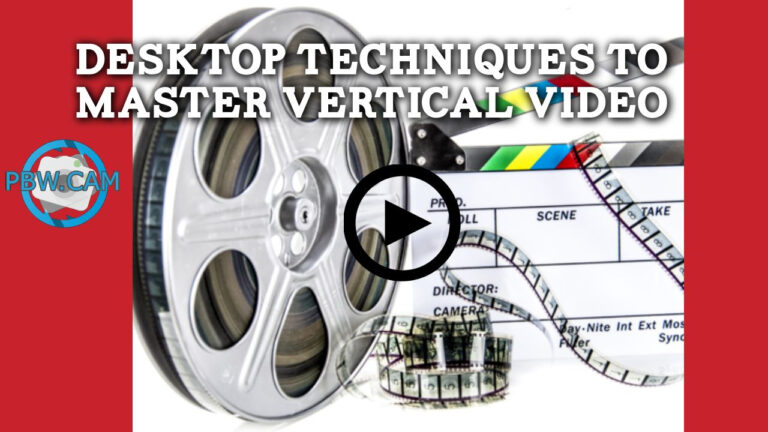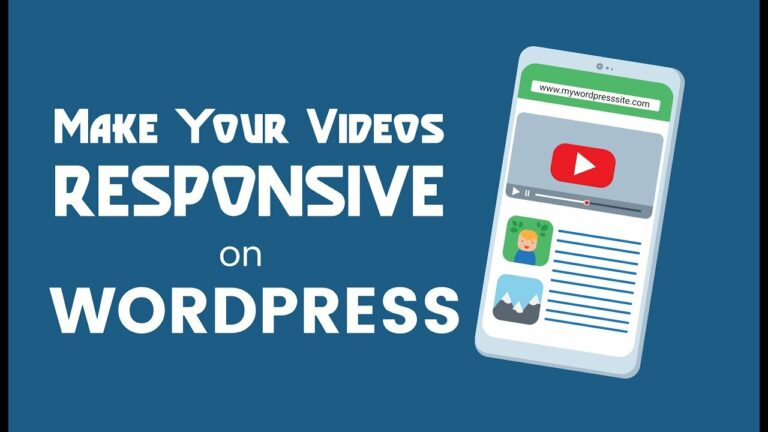Desktop Creation Made Easy with Vertical Videos
Creating professional-looking content for your business or brand can be a daunting task.
Many businesses struggle to produce content that looks professional and is engaging for their customers and followers.
Fortunately, creating content doesn’t have to be complicated or time-consuming if you use vertical videos.
Vertical videos are the perfect tool for creating content quickly and easily, with just a few clicks.
They are gaining in popularity, as many businesses are turning to this innovative form of content creation to help them reach their target audiences in a more efficient and effective way.
In this blog post, we will explore the benefits of Desktop Creation Made Easy with Vertical Videos to create desktop content and how easy it is to get started.
We’ll discuss the advantages of using vertical videos and how to create them, as well as answer some of the most common questions about this type of content creation. So, let’s get started and learn how to make desktop creation easy with vertical videos.
In today’s fast-paced digital landscape, the demand for engaging and visually compelling content has never been higher.
As businesses and content creators strive to capture audience attention across various platforms, the ability to produce high-quality videos efficiently is paramount.
“Desktop Creation Made Easy with Vertical Videos using Camtasia” explores how Camtasia, a powerful screen recording and video editing software, can streamline the video creation process, particularly for vertical formats that are increasingly favored on social media and mobile devices.
Vertical videos cater to a mobile-first audience, allowing creators to optimize their content for platforms like Instagram, TikTok, and Snapchat, where vertical viewing is the norm.
This article delves into the features and functionalities that make Camtasia an ideal choice for desktop video creation, highlighting its user-friendly interface, robust editing tools, and seamless integration of screen recording and animations.
Whether you are a seasoned video professional or a novice looking to enhance your digital storytelling skills, Camtasia offers the versatility and power needed to elevate your content.
Join us as we unveil practical tips and techniques for leveraging Camtasia to produce captivating vertical videos that resonate with today’s audiences.
Table of Contents Desktop Creation Made Easy with Vertical Videos
Create engaging content with vertical videos
Vertical videos have gained immense popularity due to the rise of mobile consumption, making them an effective tool for capturing audience attention.
By utilizing the vertical format, creators can tap into the natural way viewers hold their devices, providing a more immersive and engaging experience.
This orientation allows for dynamic compositions and storytelling techniques that resonate well with users, particularly on social media platforms where quick, impactful content is essential.
To maximize engagement, it’s crucial to focus on compelling narratives and visually appealing elements tailored for vertical viewing.
Incorporating vibrant graphics, concise messaging, and interactive components can enhance viewer retention and encourage sharing.
As audiences increasingly favor this format, investing in skills and tools to produce high-quality vertical videos can significantly elevate a brand’s presence and connect more effectively with target demographics.
Camtasia simplifies video editing tasks efficiently
With a user-friendly interface and robust features, this software streamlines the video editing process, allowing creators to focus more on content quality and less on technical challenges.
Its intuitive drag-and-drop functionality, combined with a rich library of pre-built assets, empowers users to easily integrate animations, transitions, and effects that elevate their storytelling without extensive training.
This efficiency is particularly valuable for those producing vertical videos, as it facilitates quick adaptations to different formats while maintaining high production value.
Moreover, the ability to easily fine-tune audio and video elements ensures that creators can achieve a polished final product that captures the intended message.
The platform’s built-in screen recording capabilities are advantageous for tutorial videos and presentations, enabling a seamless blend of live action with screen content.
By simplifying these tasks, it not only enhances productivity but also encourages creativity, allowing users to experiment with innovative ideas and techniques that enhance viewer engagement.
Enhance desktop presentations with vertical formats
Utilizing vertical formats in presentations can significantly enhance viewer engagement and retention, particularly in a world where mobile consumption is increasingly prevalent.
Vertical videos capitalize on the full screen of mobile devices, offering a more immersive experience that aligns with contemporary viewing habits.
By adopting this format for desktop presentations, creators can capture the audience’s attention more effectively, allowing for a dynamic and visually appealing display of information.
This shift not only modernizes content delivery but also signals adaptability to evolving media consumption trends.
Furthermore, vertical presentations lend themselves to innovative design possibilities, encouraging the integration of eye-catching graphics and typography that can guide the audience’s focus.
By leveraging the unique aspects of vertical formats, presenters can break free from the conventional horizontal layout, thereby introducing new ways to present data and narratives.
This approach fosters a more interactive environment, inviting audiences to engage with the content on a deeper level, ultimately leading to more impactful and memorable presentations.
Use templates for quick video creation
Incorporating templates into the video creation process streamlines production and enhances efficiency, particularly for those working within tight deadlines.
By providing pre-designed layouts and structures, templates allow creators to quickly implement their ideas without starting from scratch.
This leads to significant time savings, enabling users to concentrate on content quality and storytelling rather than technical details.
Furthermore, templates often come equipped with customizable features, ensuring that even rapid content can maintain a professional appearance and align with branding guidelines.
Additionally, the use of templates facilitates consistency across multiple videos, reinforcing brand identity and ensuring that each piece of content resonates with the target audience.
With a variety of styles and formats readily available, users can select the most suitable template for their specific needs, whether for marketing, education, or engagement purposes.
This adaptability not only enhances the creative process but also empowers creators to produce high-quality videos that stand out in a competitive digital landscape.
Share your videos on social media
Sharing videos on various social media platforms maximizes visibility and engagement, allowing creators to reach a broader audience.
By strategically distributing content across channels such as Instagram, Facebook, and Twitter, users can leverage each platform’s unique features and demographics, enhancing their overall impact.
Engaging visuals and compelling narratives are more likely to be shared and discussed, fostering a community of viewers who are invested in the content being presented.
Incorporating best practices for social media sharing can further amplify a video’s reach.
Utilizing relevant hashtags, creating eye-catching thumbnails, and crafting informative descriptions are essential components that can attract viewers’ attention.
Moreover, analyzing audience preferences and timing posts to coincide with peak engagement periods can lead to improved interaction rates.
This comprehensive approach not only boosts visibility but also builds a loyal following that eagerly anticipates future content.
In conclusion, Camtasia has effectively streamlined the process of creating desktop content, particularly through its support for vertical videos.
This innovative approach caters to the growing demand for mobile-friendly media, allowing creators to engage audiences in a format that is both visually appealing and easily accessible.
By leveraging Camtasia’s user-friendly interface and robust editing tools, users can produce high-quality videos that meet modern viewer preferences.
As digital consumption continues to evolve, embracing vertical video creation with Camtasia positions creators to stay ahead of the curve and maximize their impact across various platforms.
Benefits of using vertical videos with desktop creation
In this digital age, desktop creation is becoming ever more popular, and for good reason. Not only does desktop creation allow for engaging, dynamic content creation, but it also helps businesses build their brand and reach a wider audience.
One of the most effective ways to leverage desktop creation is by using vertical videos. Vertical videos provide a higher level of engagement with the content, as they are designed to be viewed on a desktop rather than a mobile device.
Additionally, they are easier to share on social media, and they can be used to create more immersive experiences for viewers. By using vertical videos in desktop creation, businesses can benefit from higher levels of engagement, a larger reach, and a more immersive experience.
Tips for creating engaging vertical videos
Vertical videos are a great way to engage viewers on mobile devices, since they are designed to fit the size of the screen. As you create your vertical videos, here are two tips to keep in mind for maximum engagement:
Keep Your Videos Short and Sweet: Vertical videos should be no longer than 15 seconds to keep viewers’ attention. Short, snappy videos are the best way to engage viewers and keep them from getting bored.
Take Advantage of Vertical-only Features: Take advantage of vertical-only features like filters, stickers, and text overlays to customize your videos.
This will help make your videos stand out from the crowd and keep viewers interested for longer.
Best video formats for desktop
Vertical videos are the best way to maximize space on the desktop. They are perfect for creating a full-screen video experience that is immersive and engaging.
When creating videos for desktop, there are three essential formats to consider: MP4, WEBM, and OGV. MP4 is the most versatile and can be used on both Mac and Windows, as well as most browsers.
WEBM is optimized for Chrome, Firefox, and Opera, and is great for streaming video. OGV is the smallest file size, so if you are looking to save disk space, this is the best option.
Each of these formats has its own advantages and disadvantages, so it’s important to assess your needs and choose the best format for your project.
How to maintain high quality video
Maintaining high quality when creating vertical videos is key to creating a professional and visually pleasing video.
To ensure the highest quality output, start by shooting in 4K. For the best results, you should also use a tripod and external microphone to minimize any shakiness or background noise.
Finally, keep a close eye on your video’s sharpness, brightness, contrast, and color saturation to make sure they are all in check. By following these tips, you can create a video that is sure to stand out.
How to optimize video playback on desktop
Optimizing video playback on desktop is essential for providing a smooth viewing experience for your audience. Here are some tips to keep in mind when optimizing video playback on desktop:
Use a reliable hosting platform that guarantees consistent streaming speeds.
Choose an appropriate bitrate for your videos to ensure the highest quality without sacrificing speed.
- Use an HTML5 video player to ensure your videos will play seamlessly on all modern browsers.
Utilize adaptive streaming to ensure that your video plays correctly on multiple devices, regardless of connection speed.
Use compression to reduce file sizes, while maintaining a good quality video.
Different editing software for creating vertical videos
Vertical videos are becoming increasingly popular, and they’re a great way to capture more of your audience’s attention.
Creating these videos can be tricky, however, as the standard video editing software can’t always accommodate the unique formatting needs.
Fortunately, there are plenty of options for editing vertical videos, ranging from free and open-source solutions to more robust, feature-rich software.
Here are some of our favorite choices for creating vertical videos: Adobe Premiere Rush, DaVinci Resolve, Filmora, Lightworks, Animotica and Magisto.
Each of these has its own unique features and capabilities, so you can find the perfect fit for your video project.
How to use motion graphics in vertical videos
When creating desktop videos, motion graphics can be used to make them look more professional and engaging.
Motion graphics are animations and text used to tell a story in a visually appealing way. They can be used to draw attention to important elements of your video, such as calls to action. When used in vertical videos, motion graphics can help make your content stand out.
To use motion graphics, you can create them yourself using simple animation software, or you can purchase pre-made motion graphics. Once you have the motion graphics, make sure to incorporate them into the vertical video in the right places.
Strategies to optimize vertical videos for various devices
With more and more people using their phones to watch videos, it’s important for creators to optimize their vertical videos for mobile devices. Here are 8 strategies to help you do just that.
Keep the aspect ratio in mind when creating your video. Vertical videos should be 9:16 or higher.
Keep the video short – no more than 15 seconds.
Make sure you’re using high-quality visuals and audio.
Use subtitles and captions to make your video more engaging.
Include a call to action at the end of your video.
Test your video on different devices to make sure it looks good everywhere.
Take advantage of the “share” button to make sure your video is seen by a wider audience.
Monitor your video’s performance and adjust your strategy accordingly.
Overall, creating vertical video content for desktop devices is easier than ever. With the help of the right tools and strategies, marketers can produce eye-catching, engaging vertical videos that are sure to capture the attention of their target audiences.
This will not only help them to effectively reach their goals but also to build trust with their existing and potential customers.








